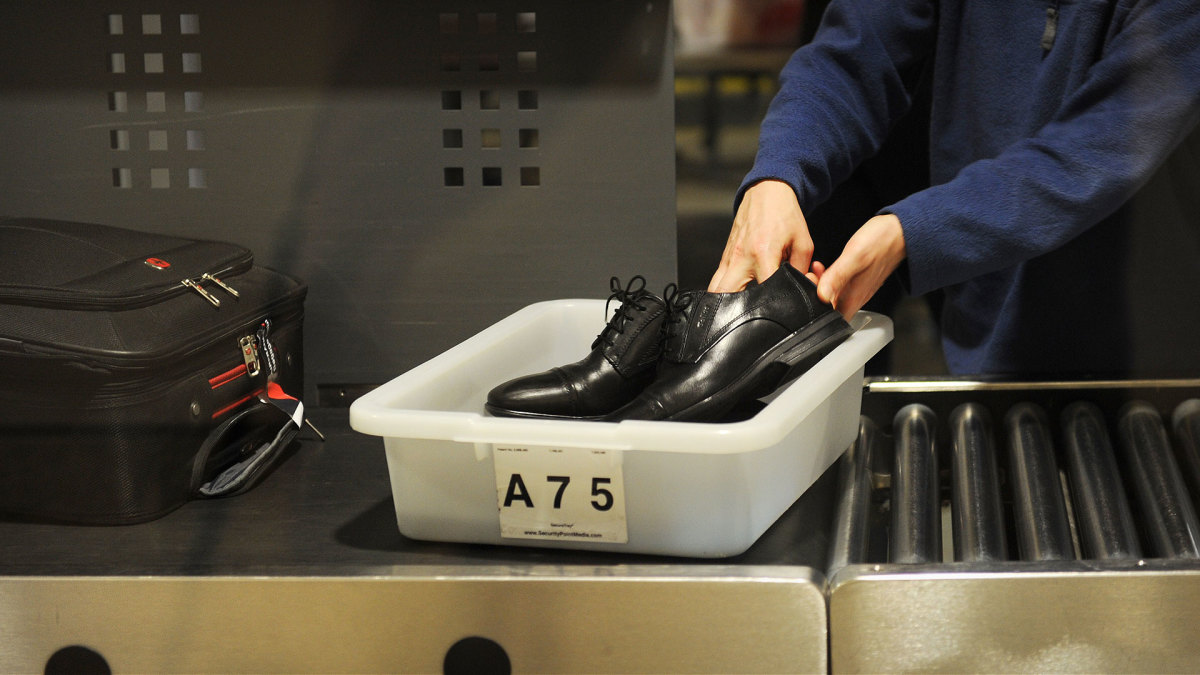On July 8, 2025, the Department of Homeland Security made a very exciting announcement.
The statement about the news read: “Homeland Security Secretary Kristi Noem announced a new policy today which will allow passengers traveling through domestic airports to keep their shoes on while passing through security screening at TSA checkpoints.”
This was a fantastic change as the rule that you must take your shoes off when going through security had officially been in effect since 2006. TSA officials had been informally requiring shoes off for even longer, since 2001, when a shoe bomber named Richard Reid tried to hide explosives in his shoes.
However, while the new policy has been in effect for a while without incident, the TSA issued a stern warning recently regarding a major exception to the new policy.

Image source: Beck/AFP via Getty Images
TSA warns passengers of exception to the shoes-on rule
The TSA issued the warning about the exception to the shoes-on rule on the agency’s Facebook page. In a post on September 8, the TSA’s Facebook post stated:
“Did you know you can toe-tally leave your shoes on through TSA screening? That’s right, there’s no need to remove your shoes in standard or TSA PreCheck lanes unless they alarm.”
This post addressed a question that several travelers have raised. In fact, several months ago, in the r/tsa subreddit, posters raised this question, with one Redditor explaining that this problem had arisen multiple times, most notably with shoes like Birkenstocks, which the poster described as “notorious for this.”
What could cause your shoes to alarm at TSA?
Since no one wants to have to take their shoes off now that the rule has changed, it’s helpful to note the types of things that could cause shoes to alarm. Some of the most common reasons why this would occur include:
- Built-in metal: There are certain shoes that have metal in the heels, as well as steel-toed boots, all of which could cause the alarm to trigger.
- Thick soles: TSA was able to change the shoes-off rule because technology had advanced, so shoes could be screened without removal. However, advanced imaging technology that’s used now may still have difficulty with thick-soled shoes or shoes with a lot of padding. As a result, these types of shoes could cause alarm.
Smaller airports that use traditional walk-through metal detectors may also be more likely to experience false alarms when travelers pass through.
How to reduce the chances of your shoes alarming at security
If you want to reduce the chances of being stopped and made to take your shoes off, your best bet is to choose the simplest shoes that you can. Simple sneakers or sandals without any metal attached to them will be your best bet.
Related: Frontier Airlines’ change makes flying even less pleasant
Of course, you could still be subject to random extra screenings or an alarm could be triggered for other reasons, so it remains a good idea to leave yourself plenty of time to get through airport security just in case you do end up having to remove your shoes or go through any type of advanced screening process.
Experts generally recommend getting to the airport around two hours before your flight to allow yourself to pass through security without worrying about having to rush to meet your plane.
“We recommend that when flying domestically out of a medium to large airport that travelers get to the checkpoint two hours prior to their airline departure time, regardless of whether they are enrolled in TSA PreCheck,” TSA Spokesperson Lisa Farbstein told Travel & Leisure. “This is especially important if someone is traveling during a holiday period.”
More on travel:
- U.S. government issues serious warning for cruise passengers
- Delta Air Lines makes a baggage change that travelers will like
- United Airlines passenger incident triggers quick response
While the new shoes-on rule should speed things up, it’s still a good idea to follow this best practice so you don’t find yourself worrying about whether you will be able to get to your destination.
#TSA #sternly #warns #passengers #exception #shoeson #rule